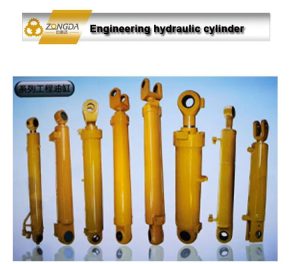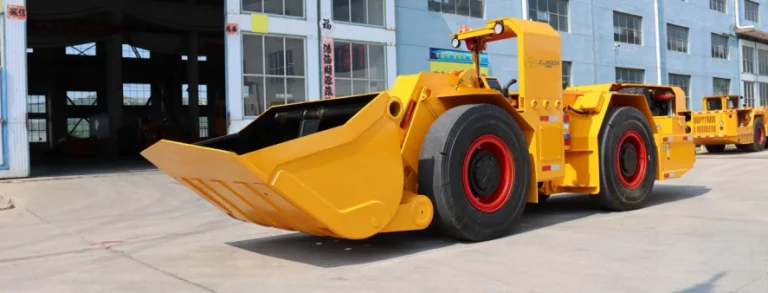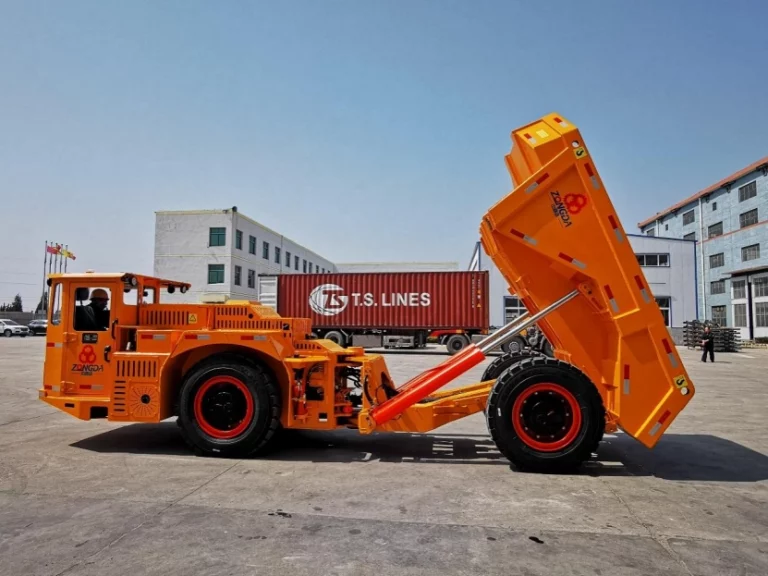Underground mining operations depend heavily on the reliability and performance of various equipment, which often requires the use of underground mining spare parts. The efficient functioning of this equipment directly relates to productivity and safety within mining operations. Consequently, understanding how often these spare parts should be replaced is crucial for maintaining operational efficiency and minimizing downtime. Regular assessment and strategic replacement of these components not only contribute to improved performance but also help in prolonging the life of critical machinery.
Understanding the Importance of Timely Replacement
The Role of Spare Parts in Underground Mining Efficiency
Spare parts are integral to the seamless operation of underground mining equipment. They contribute to optimal performance, ensuring that machinery operates at its designed capacity. When components are worn or fail, it can lead to machine breakdowns that halt production, incur repair costs, and create safety hazards. Thus, timely replacement of these spare parts is essential to maintain efficiency and productivity levels in mining operations.
Potential Risks of Delaying Spare Part Replacement
Delays in replacing underground mining spare parts can result in significant risks. Equipment failures can cause serious accidents, jeopardizing the safety of personnel and leading to costly regulatory penalties. Additionally, operating with degraded components can lead to larger-scale complications, further increasing repair costs and downtime. Ultimately, neglecting timely replacement may compromise operational efficiency and business profitability.
How Zongda’s Quality Assurance Supports Sustained Operations
Zongda’s commitment to quality assurance plays a pivotal role in enhancing operational efficiency in underground mining. The company’s rigorous testing and adherence to industry standards ensure that their spare parts consistently perform well under demanding conditions. This dedication not only supports sustained operations but also fosters greater confidence among mine operators regarding the reliability of their equipment.
Factors Influencing Replacement Frequency
Type and Usage of Equipment
The frequency of spare part replacement is influenced significantly by the type of equipment in use and its operational demands. Different machines have varying specifications that dictate wear rates of components. For instance, heavy-duty machinery subjected to constant high-stress conditions will require more frequent replacement compared to lighter equipment with less demanding applications. Understanding these usage patterns helps in planning effective maintenance schedules.
Operating Conditions and Environmental Factors
The operating environment is another vital factor influencing replacement intervals of underground mining spare parts. Factors such as temperature fluctuations, humidity, and the presence of dust or corrosive materials can accelerate wear and tear. Mining conditions that are harsh or unpredictable can strain equipment components, necessitating a more vigilant approach to monitoring and replacement.
Manufacturer Recommendations and Industry Standards
Adhering to manufacturer recommendations and industry standards is key to determining the correct timing for spare part replacement. Manufacturers typically provide guidelines based on extensive testing and experience in the field, which serve as benchmarks for maintenance practices. Understanding these standards aids mining operations in achieving optimal performance and safety.
Insights from Zongda’s Product Guidelines
Zongda offers detailed product guidelines that inform operators about the expected lifespan and maintenance requirements of various spare parts. By following these insights, mine operators can make informed decisions regarding replacement scheduling, reducing the likelihood of unexpected failures and enhancing overall operational reliability.
Monitoring Spare Part Performance
Implementing a Preventative Maintenance Schedule
A well-structured preventative maintenance schedule is essential for monitoring the performance of underground mining spare parts. Regularly scheduled inspections allow for early detection of wear and potential issues. This proactive approach helps in extending the lifespan of components while ensuring that mining operations are not unduly disrupted.
Benefits of Routine Inspections
Routine inspections serve multiple benefits, including timely identification of problems before they escalate into major failures. By maintaining a consistent schedule of checks, operators can keep track of the condition of spare parts and make informed replacement decisions. Moreover, routine assessments contribute to an overall culture of safety and reliability within the mining operation.
Utilizing Predictive Maintenance Technologies
To further enhance spare part management, employing predictive maintenance technologies can be advantageous. These technologies utilize data analytics and machine learning to predict when components may fail based on real-time performance metrics and historical data. As a result, operators can plan replacements strategically, minimizing downtime and unexpected operational interruptions.
Advantages of Condition Monitoring Systems
Implementing condition monitoring systems provides significant advantages to underground mining operations. These systems track the performance and health of spare parts continuously, offering insights that aid in decision-making regarding replacements. By aligning replacement schedules with actual equipment conditions, mine operators can optimize their maintenance strategies efficiently.
Establishing Optimal Replacement Intervals
Developing a Data-Driven Replacement Schedule
A data-driven approach to scheduling replacements for underground mining spare parts is key to maximizing efficiency. By collecting and analyzing operational data, mine operators can establish patterns and anticipate maintenance needs. This systematic approach helps to ensure that components are replaced at the right time, improving both productivity and safety.
Techniques for Data Collection and Analysis
There are various techniques for collecting and analyzing data related to equipment performance. Utilizing digital tools and software systems can facilitate the collection of performance metrics, enabling operators to conduct comprehensive analyses. Implementing these techniques significantly enhances strategic decision-making regarding spare part replacement.
Integrating Supplier Recommendations
Incorporating supplier recommendations into replacement scheduling is vital for optimal maintenance practices. Suppliers can provide valuable insights based on their expertise and knowledge of spare part performance in diverse mining environments. By aligning maintenance plans with these recommendations, mine operators can improve operational efficiency and reduce the risks associated with equipment failures.
Aligning with Zongda’s Expertise
Zongda’s abundant expertise in underground mining spare parts is an invaluable resource for operators seeking to establish effective maintenance protocols. Their experience in the industry enables them to offer tailored recommendations that enhance efficiency and reliability. By leveraging Zongda’s knowledge, mining operations can ensure that spare parts are replaced appropriately and on schedule.
Balancing Cost and Efficiency in Spare Part Management
Calculating the Total Cost of Ownership (TCO)
When evaluating underground mining spare parts, stakeholders should consider the Total Cost of Ownership (TCO) as a pivotal metric. TCO goes beyond the initial purchase price; it incorporates associated costs such as maintenance, potential downtime, and eventual replacement. This holistic view enables mining operators to compare the long-term costs of high-quality components versus cheaper alternatives that may lead to greater reliability issues and increased replacement frequency. By aligning purchasing decisions with TCO, organizations can foster a more sustainable economic model in their operations.
Evaluating Long-Term vs. Short-Term Costs
Evaluating long-term versus short-term costs offers crucial insights into the decision-making process regarding spare parts. Opting for cheaper components may yield immediate savings but could result in higher expenses due to unscheduled replacements and maintenance efforts. Conversely, investing in higher-quality underground mining spare parts may appear more costly upfront but can lower long-term operational expenses. Mining professionals are encouraged to conduct a thorough cost-benefit analysis, considering both immediate and future implications of their purchasing choices.
Strategies for Inventory Management
Effective inventory management is essential to minimize both costs and inefficiencies in underground mining operations. A strategic approach involves maintaining a keen awareness of inventory levels to ensure that critical spare parts are readily available when needed. Utilizing techniques such as just-in-time (JIT) inventory can minimize excess stock while ensuring availability, thus optimizing storage costs. By harmonizing inventory management with operational demands, mining firms can streamline their operations and support uninterrupted production cycles.
Importance of Working with Reliable Suppliers like Zongda
Partnering with reliable suppliers is vital to effective inventory management and seamless operational flow. Suppliers like Zongda, recognized for their quality underground mining spare parts, provide not only high-performance products but also valuable support in determining optimal stock levels. Their expertise helps mine operators anticipate spare part demand accurately, allowing for timely purchases and replacements. Additionally, fostering a collaborative relationship with dependable suppliers can lead to advantageous terms and improved supply chain efficiency.
Final Thoughts on Replacement Strategies for Maximum Efficiency
In the quest for maximum efficiency in underground mining operations, establishing effective replacement strategies for spare parts is essential. An integrated approach that leverages TCO evaluations, precise inventory management, and proactive maintenance planning ensures that companies can sustain operational health and productivity. By strategically collaborating with reliable suppliers such as Zongda, mine operators can secure high-quality components and tailored insights into best practices for replacement schedules.
Moreover, continuous evaluation of industry standards and manufacturer guidelines will arm mining professionals with the knowledge required to navigate the complexities of spare part management. By adopting these robust strategies and practices, mining companies not only enhance equipment reliability and reduce costs but also significantly improve safety for their teams in the demanding underground environment. Emphasizing an analytical and informed approach will allow them to tailor maintenance efforts that minimize downtime and extend equipment lifespans, ultimately leading to a more profitable and sustainable mining operation.







